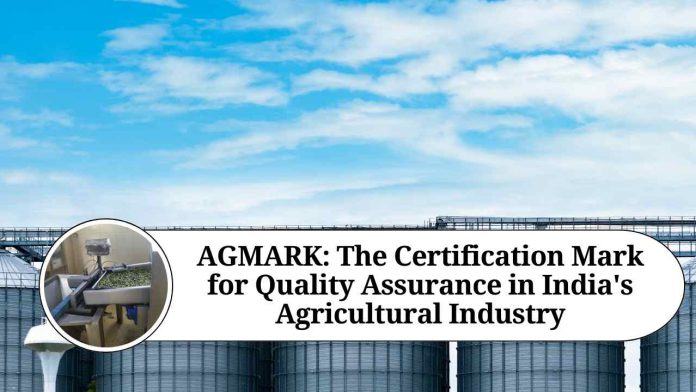The AGMARK certification process is voluntary and applies to a wide range of agricultural products, including grains, pulses, oilseeds, fruits, vegetables, spices, and honey, among others. The certification process involves grading, labeling, and marking of agricultural products to indicate their quality, grade, and origin. The certification mark is granted only after a rigorous process of testing, inspection, and certification by the authorized agencies.
The AGMARK certification is an important tool for both consumers and producers. For consumers, it provides assurance that the product they are purchasing meets certain quality standards, such as purity, freshness, and safety. For producers, it provides a means to distinguish their products from others in the market and command a higher price for their produce.
The AGMARK certification mark is widely recognized in India and is required for many agricultural products to be sold in certain markets. The mark is a guarantee of quality and is highly valued by consumers. In addition, the use of the AGMARK certification mark is mandatory for exports of certain agricultural products to certain countries.
To obtain AGMARK certification, producers must submit their products for testing and inspection by authorized agencies. The agencies use a variety of methods to evaluate the quality of the product, including physical tests, chemical analysis, and microbiological testing. Once the product meets the established standards, it is graded, labeled, and marked with the AGMARK certification mark.
The AGMARK certification process is administered by the Directorate of Marketing and Inspection (DMI), which is a subordinate office of the Ministry of Agriculture and Farmers Welfare. The DMI is responsible for implementing the Agricultural Produce (Grading and Marking) Act, 1937, and other related acts and rules. The DMI also supervises the functioning of the authorized agencies that conduct the certification process.
The AGMARK certification mark is a rectangular shape with the words “AGMARK” written in bold capital letters at the top and the name of the commodity at the bottom. The mark may also include the grade, the name and address of the producer, and the date of packing. The mark is printed in blue and red colors and must be prominently displayed on the product packaging.
The AGMARK certification process has evolved over time to meet the changing needs of the agricultural industry. In recent years, the certification process has been modernized to make it more efficient and transparent. The DMI has introduced a digital platform for the certification process, which enables producers to apply for certification online and track the status of their application.
The AGMARK certification mark has become a symbol of quality and trust in the Indian agricultural industry. It is recognized by consumers and producers alike and has helped to improve the overall quality of agricultural products in India. The mark has also helped to promote exports of agricultural products from India by assuring international buyers of the quality and safety of the products.
Conclusion
In conclusion, AGMARK is an important certification mark in India’s agricultural industry. It provides assurance to consumers that the products they purchase meet certain quality standards, and it helps producers to distinguish their products in the market. The certification process is administered by the DMI and has evolved over time to meet the changing needs of the industry. The AGMARK certification mark has become a symbol of quality and trust and has helped to improve the overall quality of agricultural products in India.
Other Related Blogs: Section 144B Income Tax Act
Frequently Asked Questions (FAQs)
Q: What is AGMARK?
A: AGMARK is a certification mark used in India to indicate that an agricultural product or commodity meets certain quality standards.
Q: When was AGMARK established?
A: AGMARK was established by the Government of India in 1937 under the Agricultural Produce (Grading and Marking) Act, 1937.
Q: What products can be certified under AGMARK?
A: The AGMARK certification process applies to a wide range of agricultural products, including grains, pulses, oilseeds, fruits, vegetables, spices, and honey, among others.
Q: Is AGMARK certification mandatory?
A: AGMARK certification is voluntary, but it is required for many agricultural products to be sold in certain markets. The use of the AGMARK certification mark is also mandatory for exports of certain agricultural products to certain countries.
Q: How is AGMARK certification obtained?
A: To obtain AGMARK certification, producers must submit their products for testing and inspection by authorized agencies. The agencies use a variety of methods to evaluate the quality of the product, including physical tests, chemical analysis, and microbiological testing.
Q: What does the AGMARK certification mark look like?
A: The AGMARK certification mark is a rectangular shape with the words “AGMARK” written in bold capital letters at the top and the name of the commodity at the bottom. The mark may also include the grade, the name and address of the producer, and the date of packing.
Q: Who administers the AGMARK certification process?
A: The AGMARK certification process is administered by the Directorate of Marketing and Inspection (DMI), which is a subordinate office of the Ministry of Agriculture and Farmers Welfare.
Q: What is the role of AGMARK in promoting exports of agricultural products?
A: The AGMARK certification mark is widely recognized in India and is required for exports of certain agricultural products to certain countries. The mark is a guarantee of quality and is highly valued by international buyers.
Q: How has the AGMARK certification process evolved over time?
A: The AGMARK certification process has been modernized in recent years to make it more efficient and transparent. The DMI has introduced a digital platform for the certification process, which enables producers to apply for certification online and track the status of their application.




















